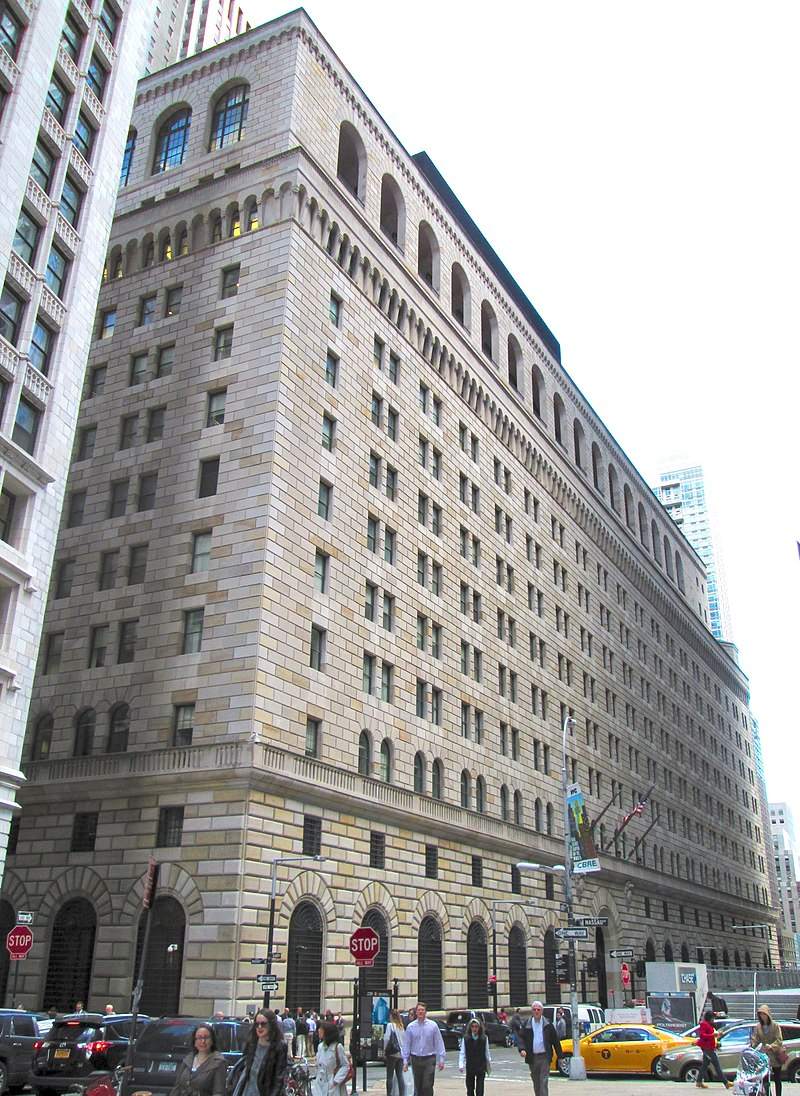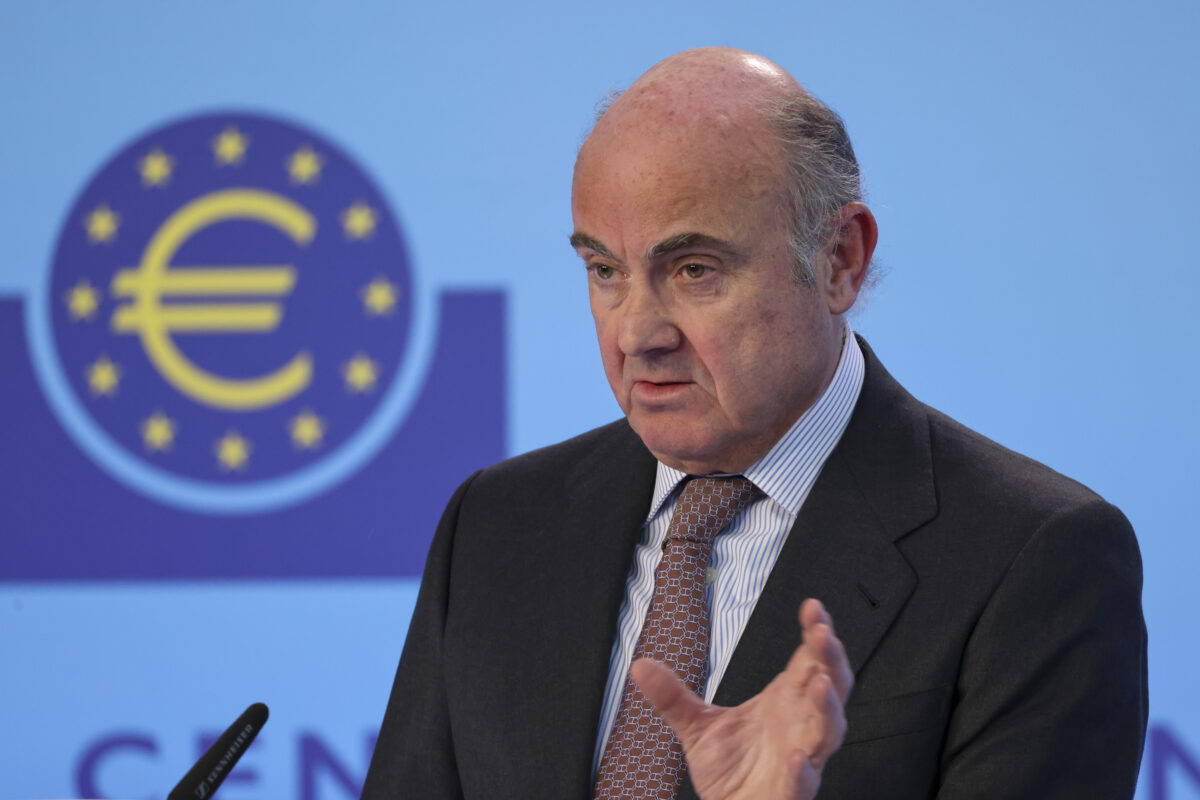FMW-Redaktion
William Dudley gilt als Chef der New Yorker Notenbank als extrem gewichtige Stimme innerhalb der gesamten Federal Reserve. In einer gestern gehaltenen Rede hat er bestehende Probleme gut beschrieben. Gleichzeizit beschreibt er auch, warum das Hauptproblem nach seiner Meinung anders als vor zehn Jahren heute kein Problem mehr darstellt. Auszugsweise zeigen wir hier einige Teile seiner Rede mit unseren Anmerkungen.
Überhitzung
Die US-Konjunktur laufe bereits auf Hochtouren, und werde jetzt noch durch die Steuerreform verstärkt. Daher müsse die Fed eventuell härter dagegenhalten in den nächsten Jahren. Das Risiko einer harten Landung steige.
So, what am I worried about? Two macroeconomic concerns warrant mention. The first is the risk of economic overheating. Now, this seems like an odd issue to focus on when inflation is low, but it strikes me that this is a real risk over the next few years. Not only do we have an economy that is growing at an above-trend pace—at a time when the labor market is already quite tight—but the economy will be getting an extra boost in 2018 and 2019 from the recently enacted tax legislation. Moreover, even though the FOMC has raised its target range for the federal funds rate by 125 basis points over the past two years, financial conditions today are easier than when we started to remove monetary policy accommodation. This suggests that the Federal Reserve may have to press harder on the brakes at some point over the next few years. If that happens, the risk of a hard landing will increase.
Now, I don’t want to imply that a recession is inevitable once the FOMC finds it necessary to nudge up the unemployment rate to a sustainable level. The starting point in terms of the inflation rate is also important because it will influence how far the FOMC is likely to go in terms of making monetary policy tight. Nevertheless, I think it is fair to say that the track record on this score is not encouraging.
Das fiskalische Problem der USA
Auch spricht Dudley explizit das fiskalische Problem der USA an. Gegenüber 2007 (1,1%) liegt das Budgetdefizit der US-Regierung laut Dudley jetzt bei 3,5%. Auch Trumps Steuersenkungen würden die Staatsschulden weiter erhöhen, die 2007 noch bei 35% in Relation zum BIP lagen, und jetzt bei 77%. Dabei muss man bedenken, dass Dudley hier von Schulden spricht, die die US-Regierung bei Gläubigern außerhalb von staatlichen US-Institutionen hat. Inklusive dieser Schulden liegt der Prozentsatz natürlich deutlich höher!
The second risk is the long-term fiscal position of the United States. Recognizing that fiscal policy is the domain of the executive and legislative branches rather than the Federal Reserve, I would emphasize several points. For one, the current U.S. fiscal position is far worse than it was at the end of the last business cycle. For example, in fiscal year 2007, the budget deficit was 1.1 percent of GDP; in fiscal 2017, it was 3.5 percent of GDP. Similarly, federal debt held by the public was 35 percent of GDP in fiscal 2007, and 77 percent in fiscal 2017. Additionally, three factors will undoubtedly cause these budgetary pressures to intensify over time: the tax legislation will push up the federal deficit and federal debt burden; debt service costs will rise as interest rates normalize; and entitlement outlays will increase as the baby boom generation retires.
Abgehobene Marktpreise, und keine Angst vor Zusammenbruch der Wirtschaft
Die Marktpreise (Aktien, Immobilien etc) sieht Dudley aktuell als abgehoben an. Darin sieht er aber kein Problem. Denn anders als 2007 würde ein drastischer Absturz heute nicht mehr zu einem Kollaps im Finanzsystem führen, da die Banken heute deutlich solider aufgestellt seien (höhere Kapitalpuffer etc).
One area I might be slightly—but not particularly—worried about is financial market asset valuations, which I would characterize as elevated. While valuations are noteworthy, I am less concerned than I might be otherwise because the economy’s performance and outlook seem consistent with what we see in financial markets. Volatility in the real economy has been low, and this has been matched by low volatility in financial markets, which has helped support high valuations. I am also less worried because the financial system today is much more resilient and robust than it was a decade ago. Thus, even if financial asset prices were to decline significantly—which presumably would occur if the economic outlook were to deteriorate—I don’t think such declines would have the destructive impact we saw a decade ago. Higher capital and liquidity requirements for major banks have made the banking system more resilient and better able to absorb market shocks without this impairing its ability to intermediate credit flows between borrowers and savers. It was the collapse of confidence in the financial system in 2008 that caused credit availability to dry up, contributing greatly to the severity of the Great Recession.
Und sonst?
Dudley spricht an, dass angeblich die Relation zwischen niedriger Arbeitslosigkeit und steigender Inflation derzeit nicht mehr existiere. Er glaube aber sehr wohl an die noch bestehende Korrelation dieser Faktoren.
On this point, some wonder whether the relationship between tight labor markets and higher inflation has broken down. I have not lost faith in this relationship. As the labor market has tightened over the past few years, we have seen a discernible firming in the wage inflation trend from 2 percent to around 2½ percent. Also, data at the state level indicate that states with lower unemployment rates tend to have firmer wage trends. This supports the case that tighter labor markets tend to be associated with higher wage growth.
Hauspreise steigen zwar stark wie auch die Aktienmärkte, ebenso die Schulden. Aber die Schuldenbelastung der Haushalte sei noch erträglich, weil die Zinsen ja (noch) niedrig sind.
Over the past year, home prices have risen by about 7 percent on a national basis, and the S&P 500 equity index has risen by nearly 20 percent. In contrast, household debt has risen about 4 percent over the past year, only slightly higher than the growth in personal income. Further, the household debt service burden is low, reflecting the extended period of low interest rates.
Viele Menschen profitieren laut Dudley nicht von dem Boom bei Aktien und Immobilien. Das sei ein Problem, weil viele junge Erwachsene mit hohen Niveaus an Studentendarlehensschulden nicht in der Lage seien sich Häuser kaufen zu können. Und der geneigte Beobachter weiß ja: Der Bau neuer Häuser ist einer der Konjunkturmotoren in den USA. Es muss gebaut und konsumiert werden, anders als in Deutschland, wo Produktion und Export im Fokus stehen!
Many people of more modest means don’t directly benefit from rising home and stock prices. And, increasing student debt burdens have made it more difficult for many young adults to become homeowners. This is significant because homeownership is a major avenue for wealth accumulation for many households. Nevertheless, the tightening labor market should provide greater opportunities for workers to obtain employment, build human capital, and gain greater opportunities to improve their financial circumstances.
Er erwarte ein Absinken der offiziellen (!) Arbeitslosenquote unter 4% in diesem Jahr, und einen spürbaren Anstieg bei den Löhnen.
If the economy continues to grow at an above-trend pace in 2018, the labor market should tighten further. In fact, I anticipate that the civilian unemployment rate will fall below 4 percent this year and reach the lowest level since at least 2000. If this scenario proves accurate, this should lead to further firming of wage growth.
Fazit
Hört sich alles stark danach an, dass der Trend zu weiter steigenden Zinsen in den USA anhält, oder sogar noch an Fahrt zunimmt – jedenfalls wenn es nach William Dudley geht.
To sum up, I am optimistic about the near-term economic outlook and the likelihood that the FOMC will be able to make progress this year in pushing inflation up toward its 2 percent objective. The economy has considerable forward momentum, monetary policy is still accommodative, financial conditions are easy, and fiscal policy is set to provide a boost. But, there are some significant storm clouds over the longer term. If the labor market tightens much further, it will be harder to slow the economy to a sustainable pace, avoiding overheating and an eventual economic downturn. Another important issue is the need to get the country’s fiscal house in order for the long run. The longer that task is deferred, the greater the risk for financial markets and the economy, and the harder it will be for the Federal Reserve to keep the economy on an even keel.

Innerhalb der Fed extrem wichtig: Die New Yorker Fed mit ihrem Präsidenten William Dudley. Foto: Beyond My Ken / Wikipedia (GFDL)
Kommentare lesen und schreiben, hier klicken













Aufschlussreich.
Danke für diesen guten Service !